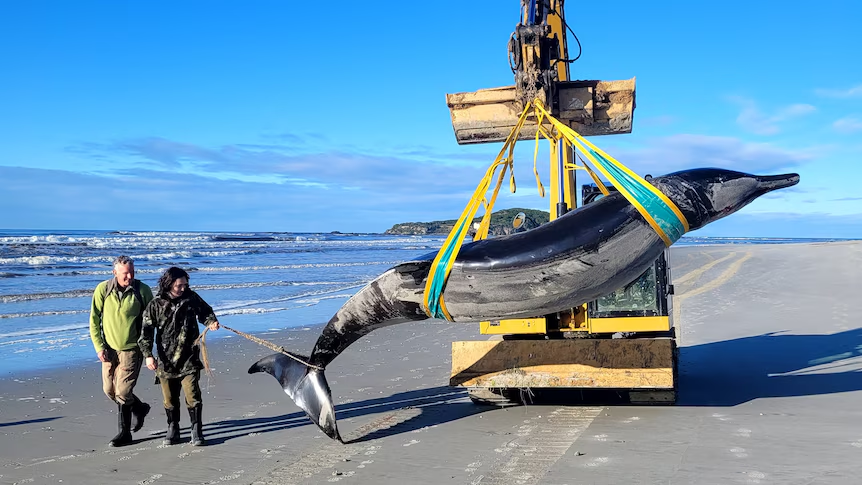When a medium-sized cetacean resembling a dolphin washed up on a New Zealand beach, marine biologists took notice.
The whale measured about five meters long, including a beak-shaped nose, when it washed ashore on July 4. Almost no one had ever seen anything like the male specimen before, and researchers are now toiling to identify it.
The relatively unscathed remains could belong to a spade-toothed whale, according to the New Zealand Department of Conservation (DOC). If that’s what the animal is, it’s by far the world’s rarest whale.
Anton van Helden, the science advisor of the DOC’s marine species team, was on site. “There is no doubt that [a spade-toothed whale] is what it is,” van Helden said.
Spade-toothed whales are one of the most poorly-known large mammals. Since the 1800s, the DOC’s Gabe Davies explained, only six samples have ever been documented worldwide. “This is huge,” he said.
The six samples include a jawbone with two teeth retrieved east of New Zealand, which first identified the species in 1874. After that, two skeletal remains showed up in Chile. Two further specimens stranded on islands near New Zealand gave clues about their color patterns, but they proved too rotten to dissect. No reports of live sightings exist.
Blubber on the rocks
Coastal marine ranger Jim Fyfe first called in the find to the DOC, sending pictures in an effort to identify it. And when van Helden caught wind of the story, he rushed to the scene.
Locals and authorities acted quickly to preserve the carcass. They first buried it in sand to prevent rot, then transported it to a freezer.
“It looked like a massive giant dolphin, the shape of it,” van Helden told The Guardian.
Identifying a ‘taoka’
With its remains now safely frozen, the DOC will work to confirm van Helden’s conviction that it is indeed a spade-toothed whale. When Fyfe inspected it, he checked for its distinctive teeth — named after the flensing blades once used by whalers to remove blubber. But they were broken off and rendered no proof, The Guardian said.
The DOC has already sent tissue samples to the University of Auckland’s Cetacean Tissue Archive for DNA sequencing. The institute boasts the second-largest collection of whale, dolphin, and porpoise tissue in the world. However, DNA tests could take months.
Authorities share a special interest in the project with 8,000 registered Maori people of the Te Rūnanga ō Ōtākou tribal council. It’s the first opportunity to dissect a possible spade-toothed whale, which the council interprets as a taoka — a treasure.
The council has urged temperance.
“It is important to ensure appropriate respect for this taoka is shown through the shared journey of learning, applying mātauraka Māori as we discover more about this rare species,” Te Rūnanga ō Ōtakou chair Nadia Wesley-Smith said.





